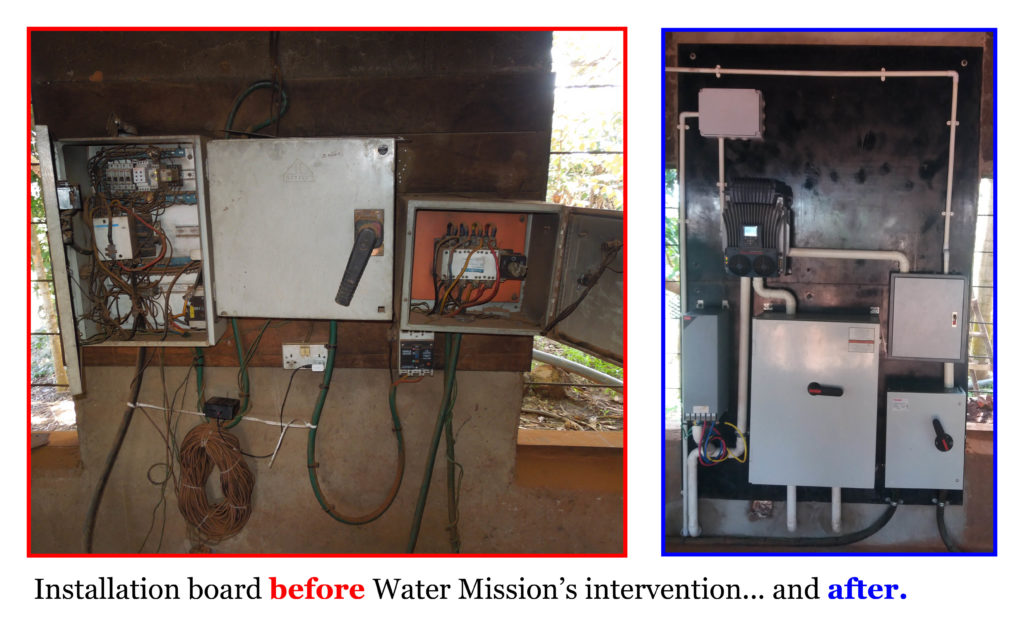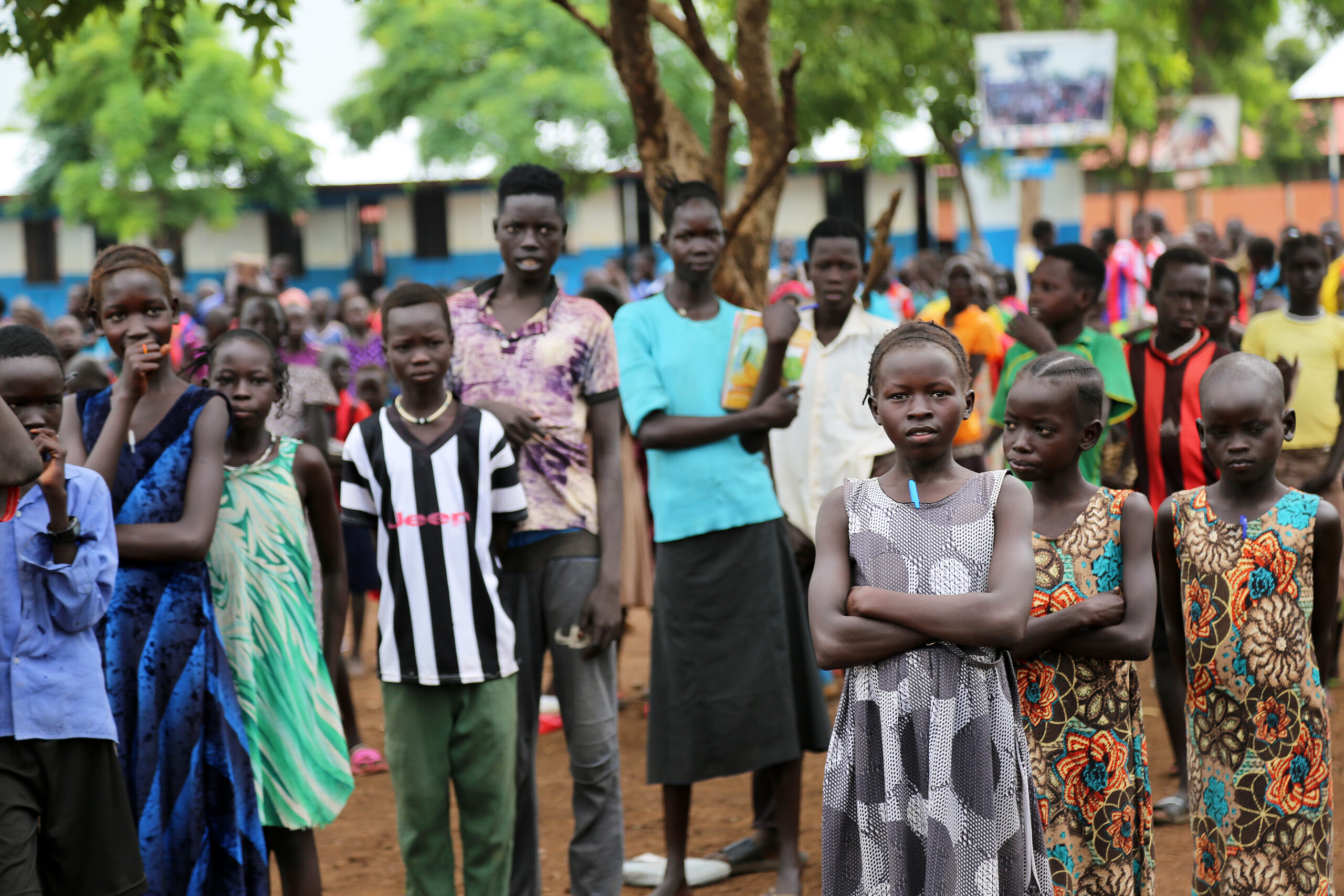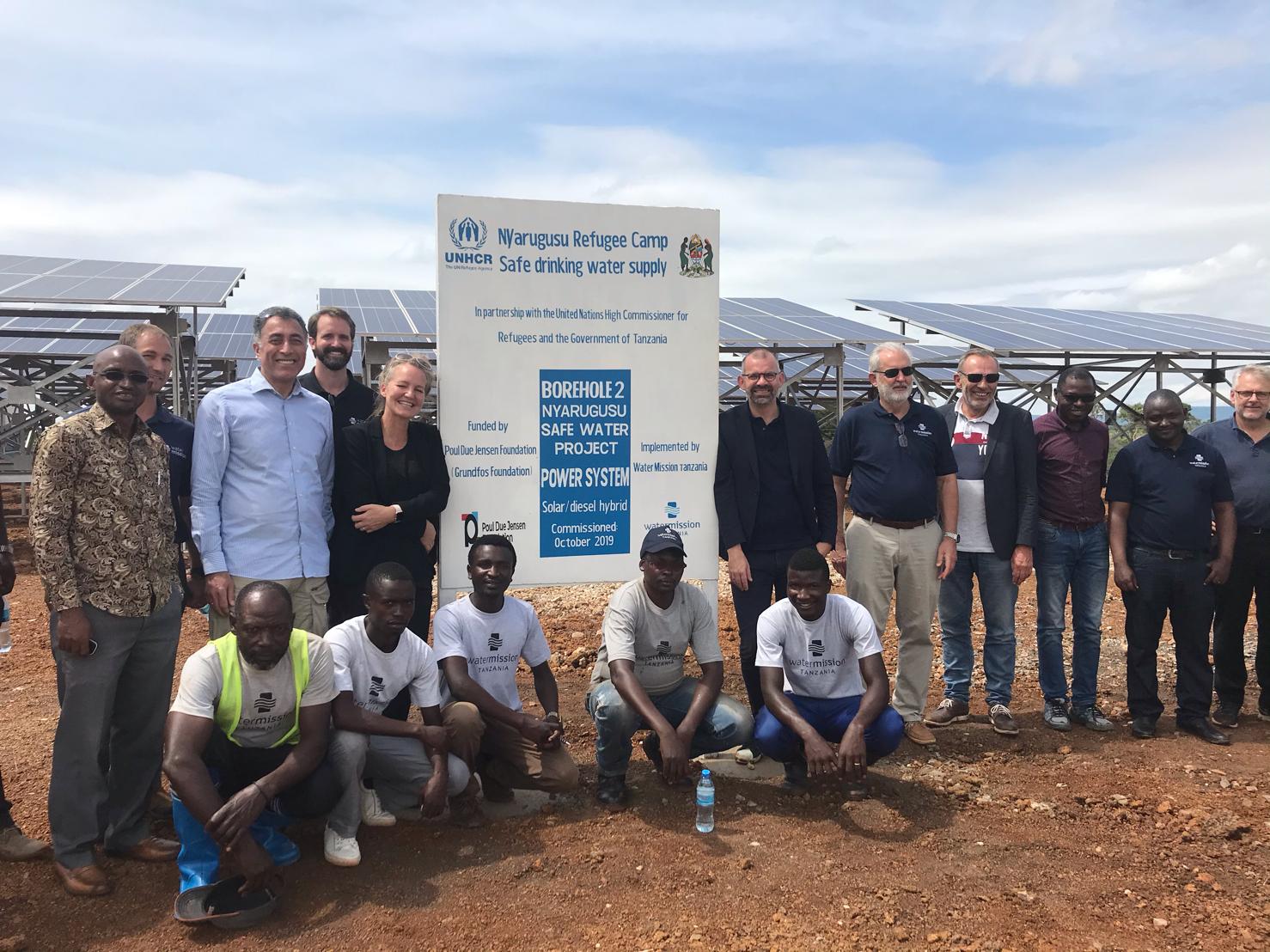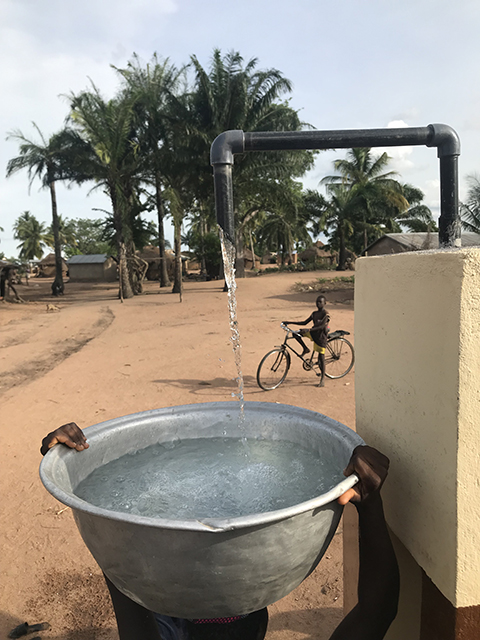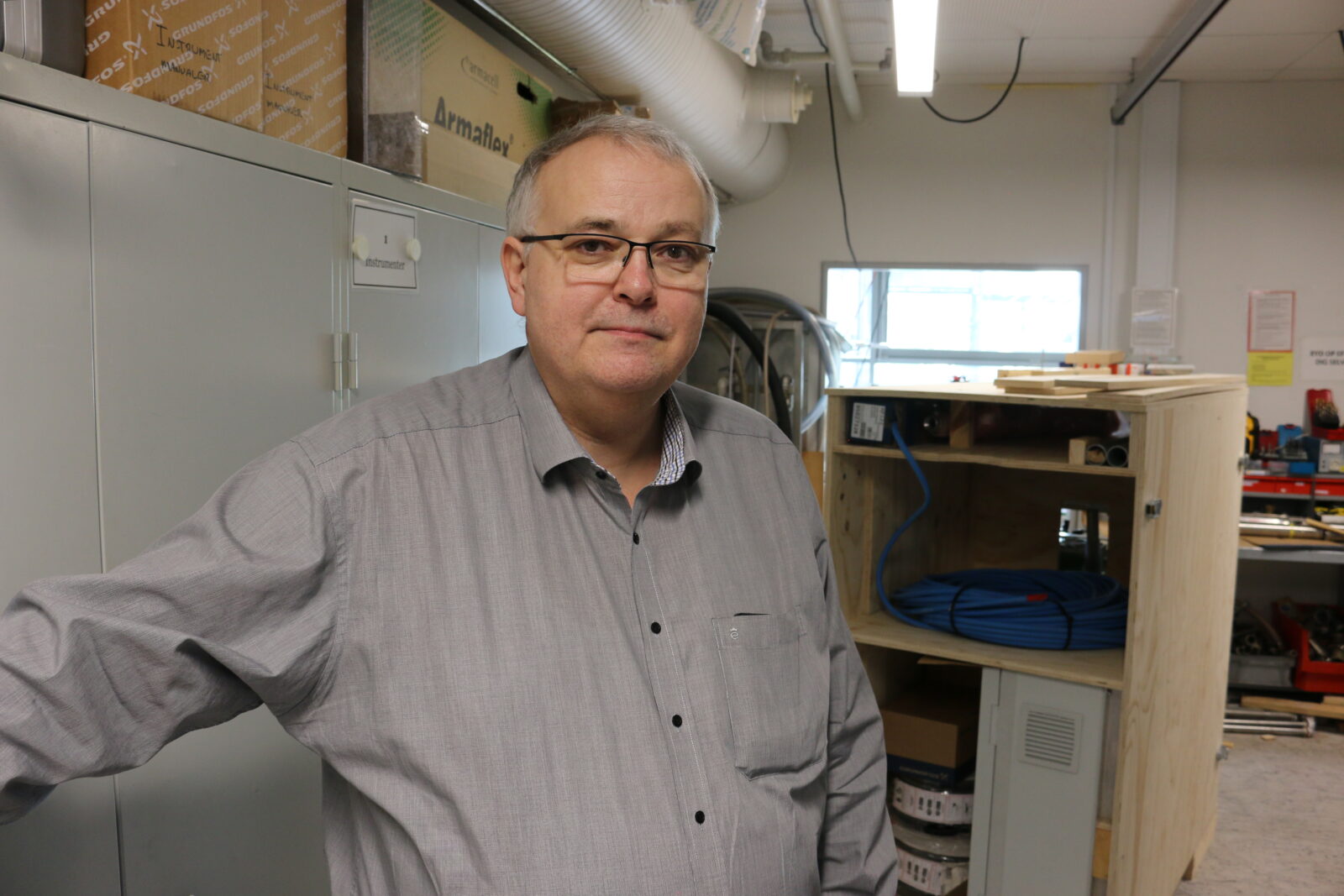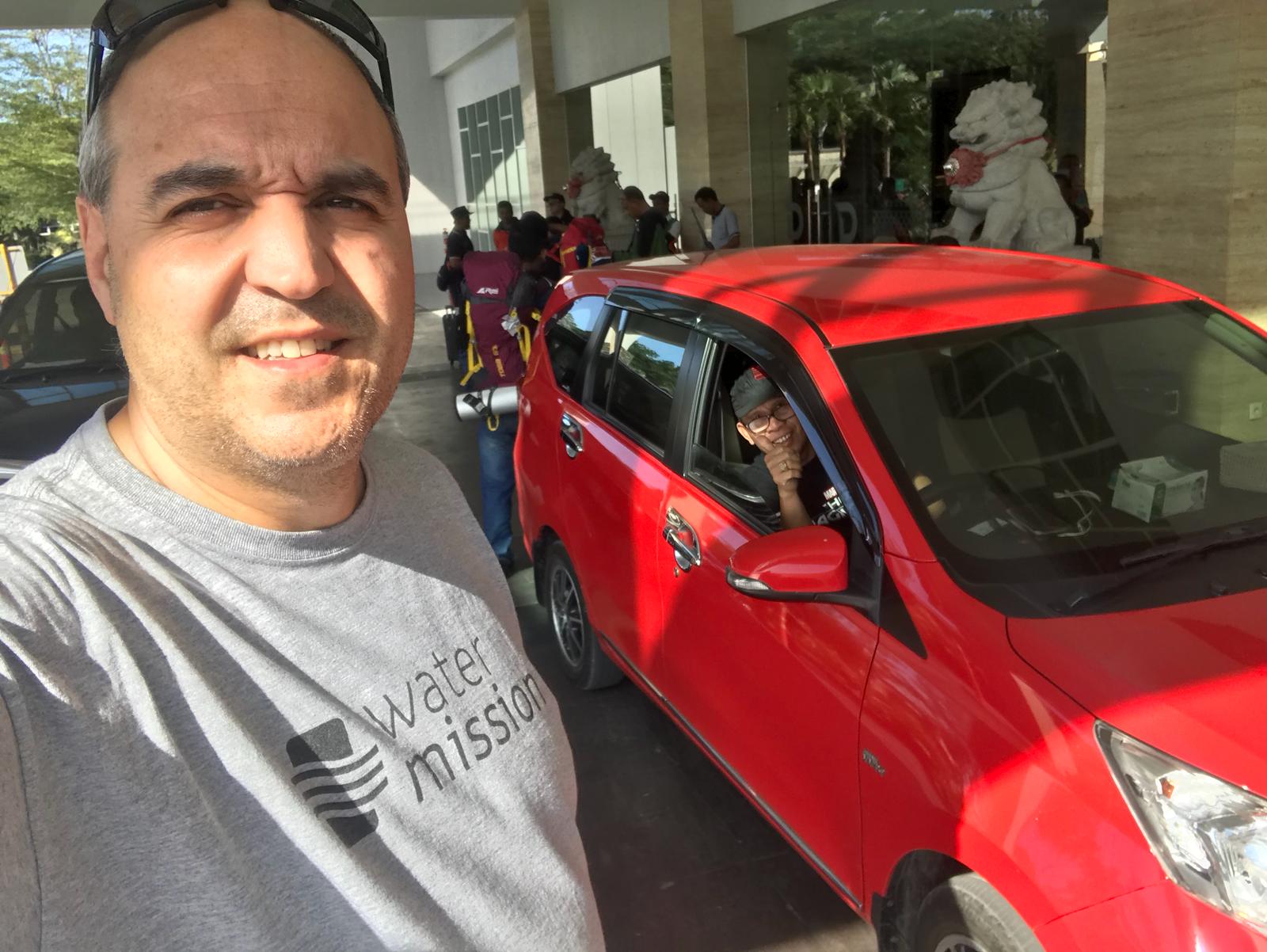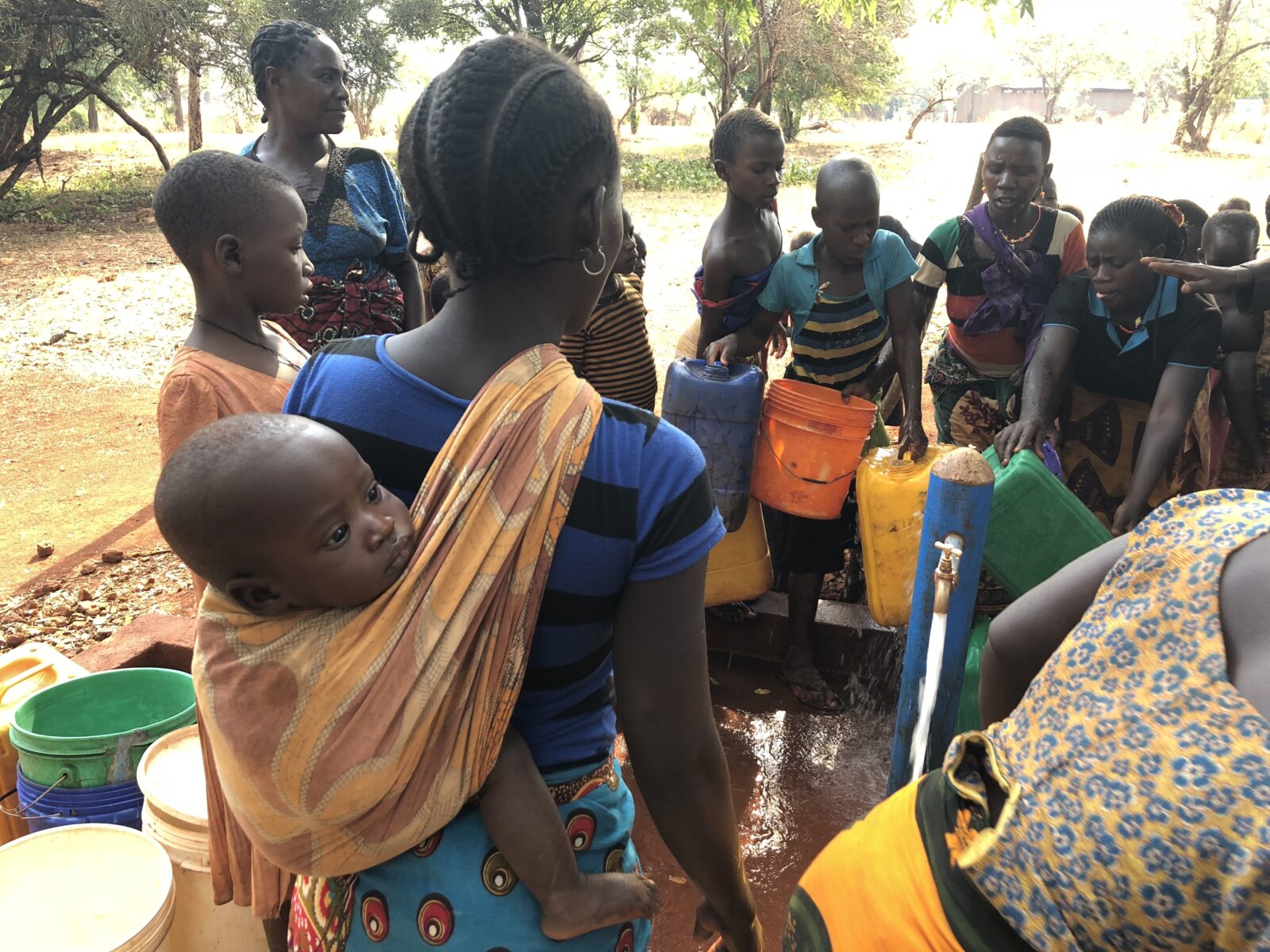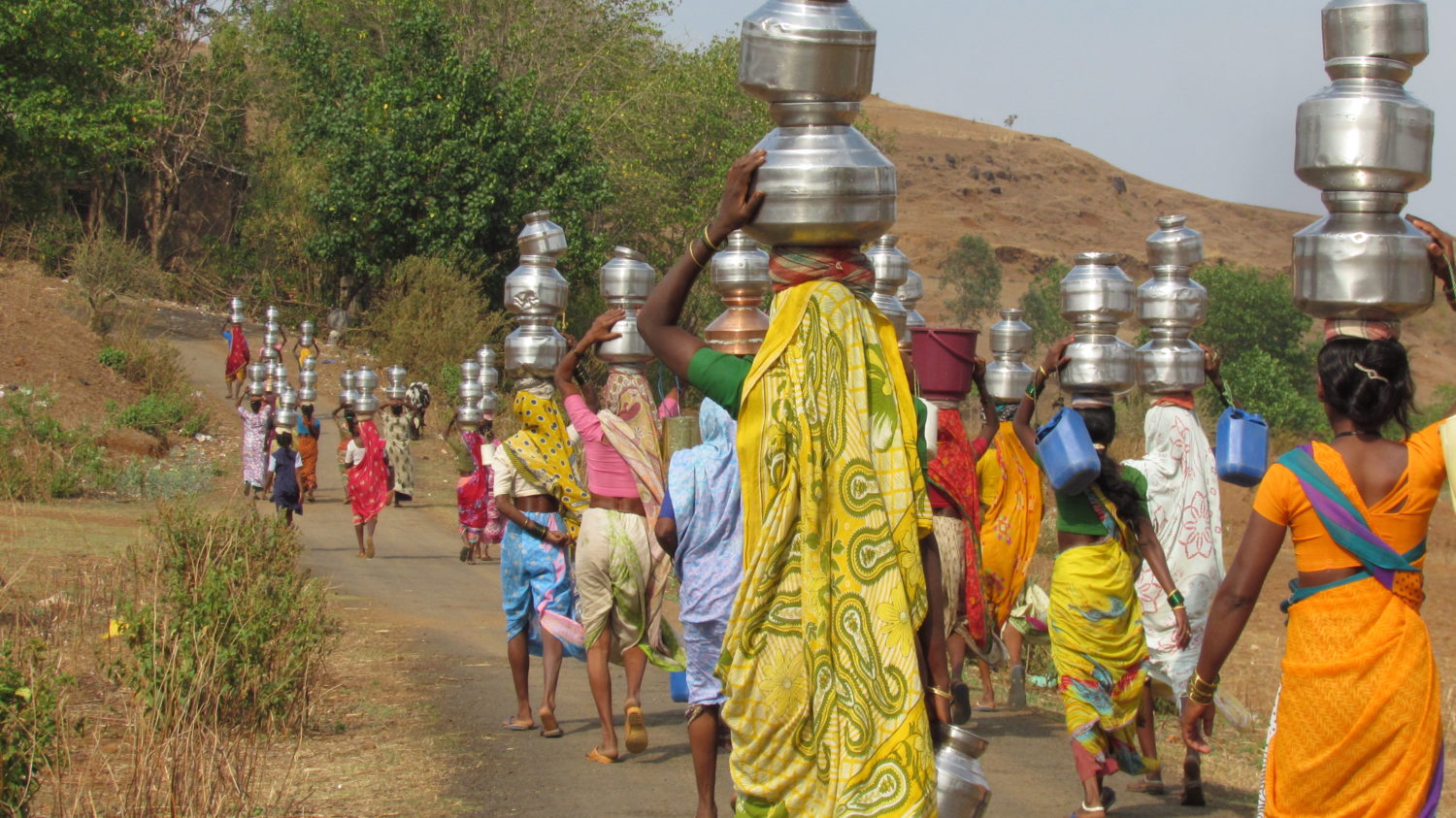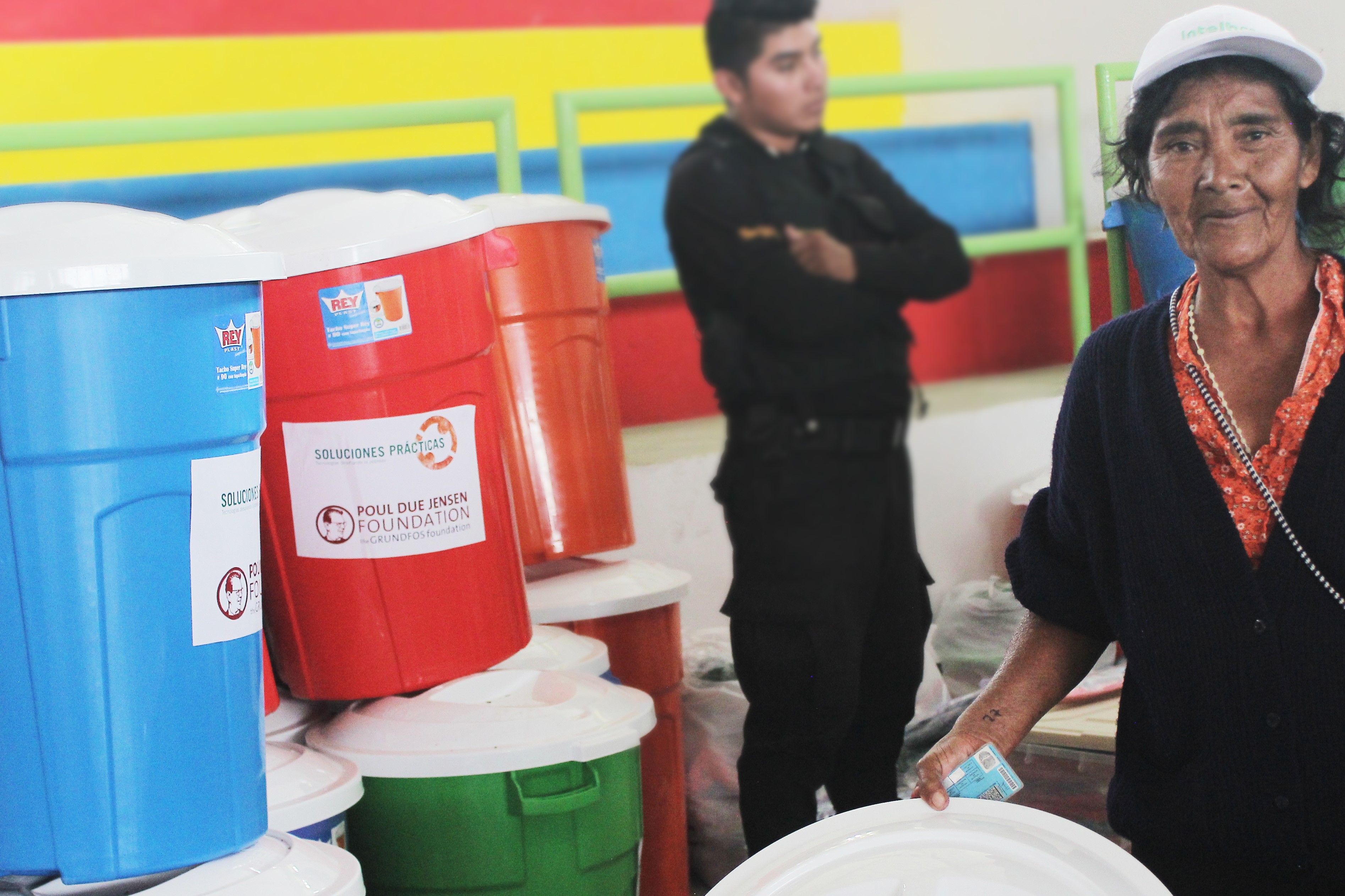These days, we have a good reason to celebrate: 66,000 refugees now have access to drinking water thanks to our ambitious collaboration with Water Mission. Over the weekend, the NGO was able to start delivering water from “Borehole 3” with 100 % solar energy in the sunny hours and a backup diesel generator. “Borehole 1” has been up and running since the autumn of 2018.
[1/2] We’re so excited to share that two more large-scale safe water systems are now in service at Nyarugusu #refugee settlement in #Tanzania! Our staff on the ground have worked around the clock to make this possible in partnership with @PDJF_dk. pic.twitter.com/lIuPBFf0ox
— Water Mission (@water_mission) January 29, 2019
From diesel to solar: cleaner and cheaper
There is a genuine wish to switch to solar in the international community, but in the rush to expand the camp infrastructure in 2015 following unrest in Burundi, speed was prioritised over long-term sustainability. If you have a diesel generator, you can have the pump running in a matter of days. But you have to factor in expensive diesel bills and other maintenance.
Borehole 3 has been restored and upgraded from an expensive and polluting diesel-driven system to now mainly running on solar energy. Water Mission has done the work in collaboration with local Tanzanians, camp residents, other NGOs and of course UNHCR, the main responsible for running the refugee camp.
The solar array (top photo) for borehole three has a capacity for 80 cubic meters per hour. The solar panels are on 14 different racks, each containing 18 295-watt panels – resulting in just over 74,000 watts. Building this takes time: You have to do construction, welding, electricity, and it takes specialised expertise. Water Mission works with this all day, and they know how to do it well.
Automatic chlorination for improved health
Although normally, groundwater is safe to drink, Water Mission always adds chlorination to avoid contamination of the water after it leaves the tap stand. Usually, water is transported and kept in plastic jerry cans or buckets, and the chlorine residue wil kill any bacteria that might find its way into the containers.
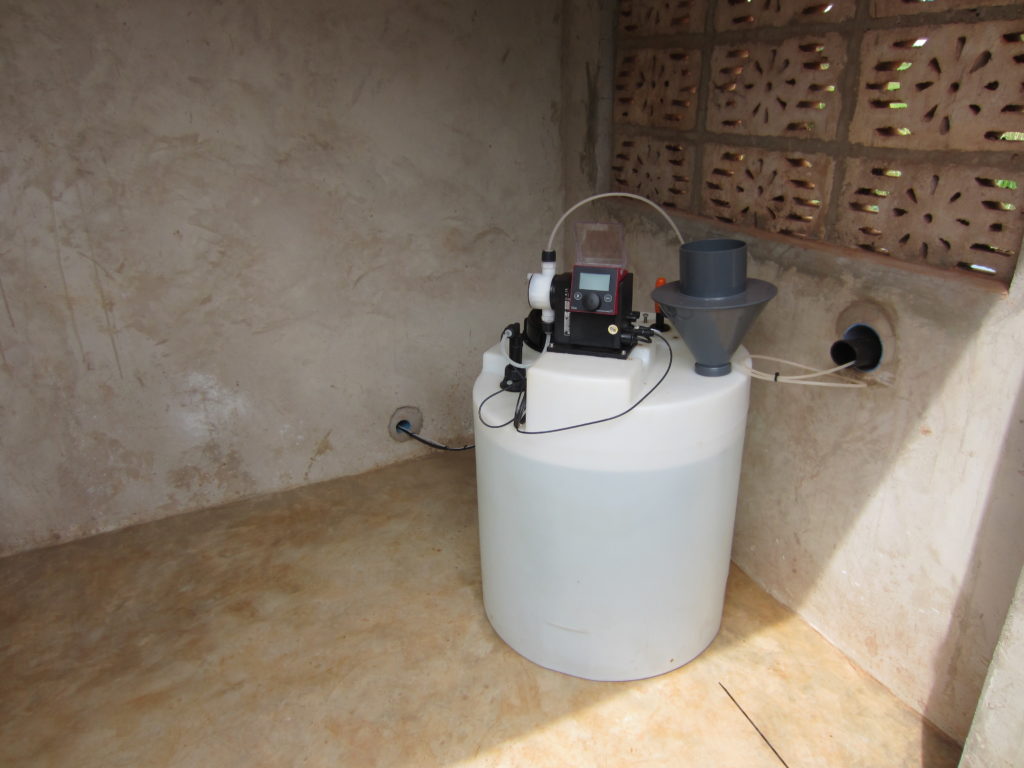
Test setup: A Grundfos dosing pump will ensure the correct amount of chlorine is added to the water. Photo: Jakob Olesen/Grundfos
In total, we aim to reach out with safe water to 313,000 refugees in Western Tanzania. You can learn more about our work in the refugee camps here.


